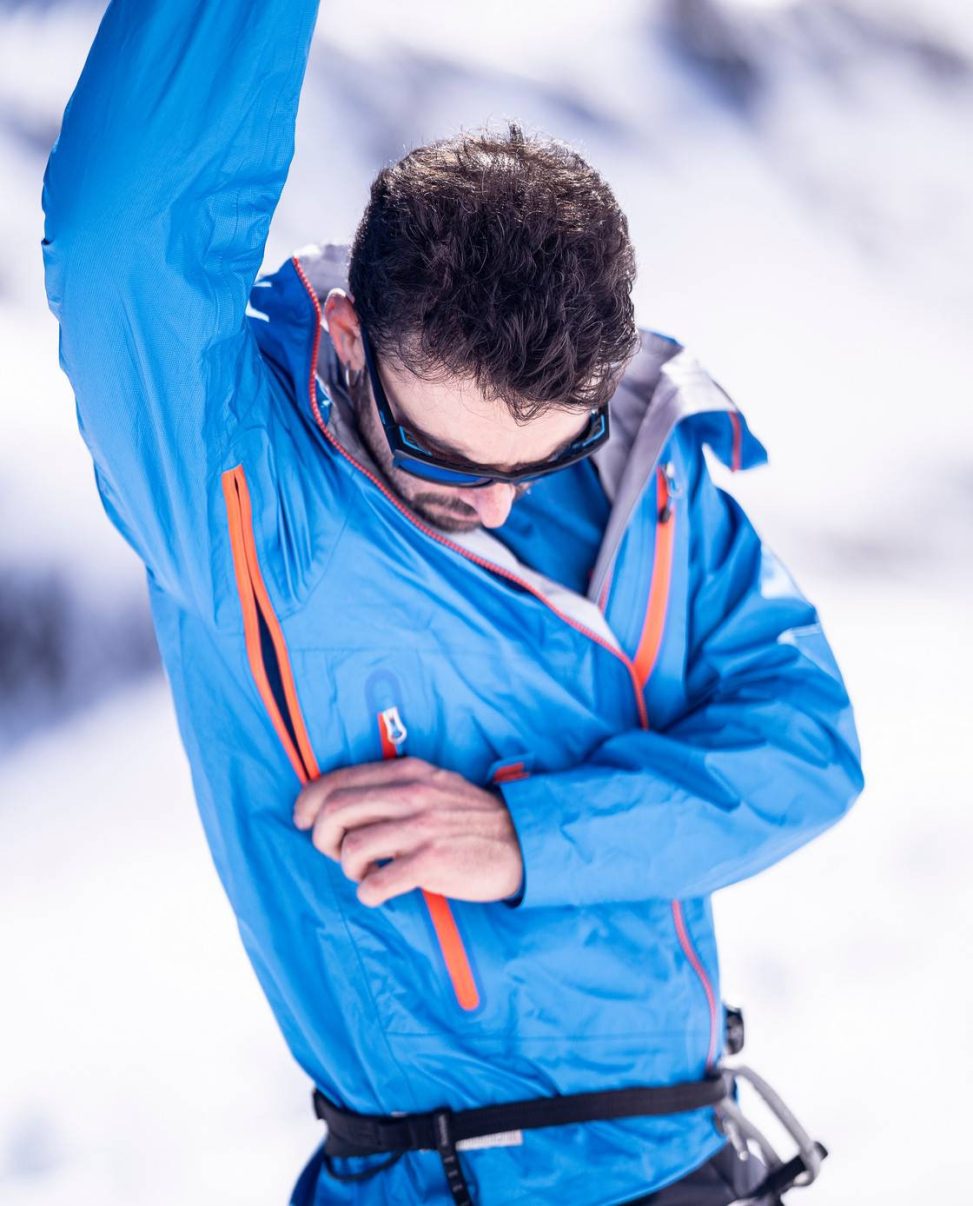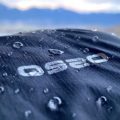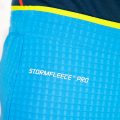In a previous article, we discussed the methods for measuring fabric breathability and the reference values, ranging from functionally acceptable (10k*) to high performance (>30k).
*Let’s remember that 10k is a simplification of 10,000g/(m²·24h), meaning that through 1 m² of fabric, 10 liters of water can evaporate for a day.
The tests are laboratory trials conducted to determine the quality of the fabrics. A fabric offering 30k indeed has a higher quality than one with 10k. However, the performance of the garment once made can vary, and generally, the actual value is lower than the laboratory value. Therefore, these values should be considered as a reference and not as an indicator of actual performance.
Not all fabric manufacturers specify the test performed, yet they all report the values obtained, using them more as a marketing tool than an indicator of the fabric’s quality and the garment’s performance. Even the differences in the tests conducted can provide confusing information. For example, water vapor resistance expressed in RET is not equivalent to water vapor permeability but, to simplify is inversely proportional. The manufacturer eVent® is one of the few that measures both water vapor resistance and permeability.
Comparison of eVent® membranes
The RET value is a reference for the comfort of the garment; the lower this parameter, the more comfortable the garment is (the less it resists evaporation, thus the more it breathes). However, it presents two major inaccuracies. First, it does not indicate whether the people used in the test are a representative sample of the general population. Second, it offers ranges rather than exact values. For example, the 0-6 range indicates the highest comfort, but there is no description specifying precise differences within these values, making it impossible to quantify the improvement between a RET of 3 and 5
It’s important to note that the tests are always conducted in laboratories. In real conditions, as we saw in the previous post (Breathability in Fabrics (I)), the interaction of various factors influences the comfort offered by garments. In fact, a very personal and significant parameter is individual perspiration. Garments with fabrics that offer values exceeding 30,000g/(m²·24h) can perform uncomfortably if used in conditions that are not conducive to the fabric’s optimal performance.
At OS2O, we believe that breathability and waterproofing data are not only necessary but crucial for comparing different membranes and making informed purchasing decisions. Additionally, as consumers of other products, we think that having access to this data is a consumer right. That’s why, on the product page of any OS2O item, you can always download the laboratory analysis of the membrane used, as well as the test performed. We hope other brands will follow suit, as they often provide data that is more questionable.
Breathability in Fabrics and Comfort
Comfort is a state of balance and well-being, both psychological and physical, between humans and their environment. On an average day, energy expenditure can reach up to 50 watt-hours per square meter. The heat generated while producing this energy dissipates through the skin as sweat. At rest, the body can produce 60 milliliters of water vapor per hour. Moderate exercise can increase this amount to 450 milliliters per hour. During FAST&LIGHT activities, sweating can increase to as much as 840 milliliters per hour.
Sweat allows the body to cool down and maintain a stable temperature of around 37°C. During mountain activities, sweat is absorbed by the first layer of clothing and transported outside depending on the layering system used. If this sweat does not evaporate outside, the body cannot cool down, resulting in more heat generation and more sweat. This can harm athletic performance and pose a danger by disrupting our thermal balance.
How to get the best performance from a waterproof and breathable garment?
Layering systems work optimally when the properties of each layer complement each other: a garment with high waterproof and breathable properties compromises its efficiency if the base and mid layers are not high-performing. The inner layer in contact with the skin is crucial for maintaining thermal balance. Its primary functions include evaporating sweat from the skin surface and transporting this moisture outward. The base and mid layers act as the first line of sweat transport, and the faster they perform this function, the more comfortable the user feels. The best base and mid-layer garments are made from merino wool, polypropylene, and polyester. Some of these garments come with hydrophobic treatments. However, these treatments do not provide significant improvement as they tend to diminish with washings.
To gain a deeper understanding of how waterproof/breathable garments function, it’s essential to understand the process of sweating and its evaporation. As a physical process, heat flows from warmer surfaces to cooler ones. When temperatures rise above 37.7ºC, radiation, conduction, and convection alone are insufficient to transfer body heat to the environment. The body must evaporate heat to cool down. This evaporation occurs through two processes:
- Insensible perspiration involves the continuous drying of moisture from the surface of the skin exposed to the environment. Measurements indicate that on an average day, this evaporation could range from 0.7 to 0.95 liters per day.
- Sweating is a process that occurs inside the body, activated by the hypothalamus when blood temperature rises. Sweat glands are stimulated, and sweat droplets flow through the skin’s capillaries. Once in contact with the skin, these sweat droplets remove excess heat from the skin’s surface to evaporate. This process is highly efficient not only because it cools the skin exposed to the environment but also because it dissipates heat from inside the body. This excess heat manifests as warm vapor through the process of convection. The heat required to evaporate moisture is known as the latent heat of vaporization. Evaporation occurs more rapidly in relatively dry environments. In conditions of high humidity and elevated temperature, sweat fails to evaporate and accumulates on the skin’s surface, thus the body does not cool as efficiently. This same negative impact is one of the factors affecting the breathability of fabrics
Humidity plays a crucial role, even in survival under high temperatures: when the air is dry, it’s possible to survive for more than 20 minutes even at temperatures over 100°C. In humid air, survival would be limited to just a few minutes at 45°C
Moreover, evaporation can occur even in cold mountain climates. In these environments, humidity is less important for cooling the body but has the opposite effect: when sweat moistens the skin, it becomes more conductive, exposing the skin’s thermoreceptors to the cold ambient temperature. As a result, a greater cold sensation is experienced compared to when the skin is dry. This underscores the importance of having a clothing system that keeps us dry and protected from sources of heat loss at all times. Wind also affects the rate of evaporation and convection, contributing to what is known as wind chill; hence, the importance of third layers being windproof in addition to waterproof and breathable.
In summary, to achieve maximum comfort and performance in the mountains, careful planning of activities and a strategic selection and use of each layer in the clothing system seem essential.
References
Tiessasie-Yilma, K., & Yilie Limeneh, D. (2021). Review on Moisture Management Finish: Mechanism and Evaluation. Journal of Natural Fibers. Doi: 10.1080/15440478.2021.196656






Deja una respuesta